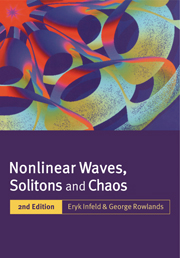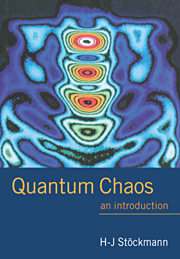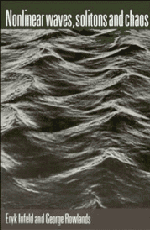Nonlinear Dynamics, Chaotic and Complex Systems
The physics and mathematics of nonlinear dynamics and chaotic and complex systems constitute some of the most fascinating developments of late twentieth-century science. It turns out that chaotic behaviour can be understood, and even utilized, to a far greater degree than had been suspected. Surprisingly, universal constants have been discovered. The implications have changed our understanding of important phenomena in physics, biology, chemistry, economics, medicine and numerous other fields of human endeavour. In this book, two dozen scientists and mathematicians who were deeply involved in the 'nonlinear revolution' cover most of the basic aspects of the field. The book is divided into five parts: dynamical systems, bifurcation theory and chaos; spatially extended systems; dynamical chaos, quantum physics and the foundations of statistical mechanics; evolutionary and cognitive systems; and complex systems as an interface between the sciences.
- Several chapters written by founders in the field (including a Nobel Prize winner, Ilya Prigogine)
- Wide range of topics covered
Product details
April 2011Paperback
9780521152945
352 pages
229 × 152 × 20 mm
0.52kg
Available
Table of Contents
- Part I. Dynamic Systems Bifurcation Theory and Chaos:
- 1. Chaos in random dynamical systems V. M. Gunldach
- 2. Controlling chaos using embedded unstable periodic orbits: the problem of optimal periodic orbits B. R. Hunt and E. Ott
- 3. Chaotic tracer dynamics in open hydrodynamical flows G. Karolyi, A. Pentek, T. Tel and Z. Toroczkai
- 4. Homoclinic chaos L. P. Shilnikov
- Part II. Spatially Extended Systems:
- 5. Hydrodynamics of relativistic probability flows I. Bialynicki-Birula
- 6. Waves in ionic reaction-diffusion-migration systems P. Hasal, V. Nevoral, I. Schreiber, H. Sevcikova, D. Snita, and M. Marek
- 7. Anomalous scaling in turbulence: a field theoretical approach V. Lvov and I. Procaccia
- 8. Abelian sandpile cellular automata M. Markosova
- 9. Transport in an incompletely chaotic magnetic field F. Spineanu
- Part III. Dynamical Chaos Quantum Physics and Foundations Of Statistical Mechanics:
- 10. Non-equilibrium statistical mechanics and ergodic theory L. A. Bunimovich
- 11. Pseudochaos in statistical physics B. Chirikov
- 12. Foundations of non-equilibrium statistical mechanics J. P. Dougherty
- 13. Thermomechanical particle simulations W. G. Hoover, H. A. Posch, C. H. Dellago, O. Kum, C. G. Hoover, A. J. De Groot and B. L. Holian
- 14. Quantum dynamics on a Markov background and irreversibility B. Pavlov
- 15. Time chaos and the laws of nature I. Prigogine and D. J. Driebe
- 16. Evolutionary Q and cognitive systems: dynamic entropies and predictability of evolutionary processes W. Ebeling
- 17. Spatiotemporal chaos information processing in neural networks H. Szu
- 18. Phase transitions and learning in neural networks C. Van den Broeck
- 19. Synthesis of chaos A. Vanecek and S. Celikovsky
- 20. Computational complexity of continuous problems H. Wozniakowski
- Part IV. Complex Systems As An Interface Between Natural Sciences and Environmental Social and Economic Sciences:
- 21. Stochastic differential geometry in finance studies V. G. Makhankov
- Part V. Conference Banquet Speech: Where will the future go? M. J. Feigenbaum.





